Today, the internet is overflowing with websites of all sorts. Finding your niche today is a conundrum with stakeholders ranging from independent writers to confectionary artists, Anagram puzzle solvers, and social media affiliate program providers. And don’t get me started on creating a strong brand identity once you’ve found your niche too.
But tricky as it may seem, it’s not impossible, as the thousands of niche brands coming to the forefront every year would attest. By the end of this 5-minute read, you’ll learn how to build a successful brand from scratch whilst catering to your specific target audience. Let’s get started!
The Importance Of Brand Identity To Niche Businesses
Taking eCommerce and the current dropshipping business model as an example, thousands of marketers and businesses are selling and promoting the same products from Amazon and AliExpress. But not every one of them is guaranteed success. Some businesses may rake in six figures in profits every month while others barely move merchandise.
The best-performing brands consist of top-level brand strategists who don’t have difficulty bringing in an audience that will pay for their products. It is why we see celebrity endorsements in advertisements and influencer marketing on social media platforms. You’re not moving the product, you’re using the face of your company to attract millions of people globally.
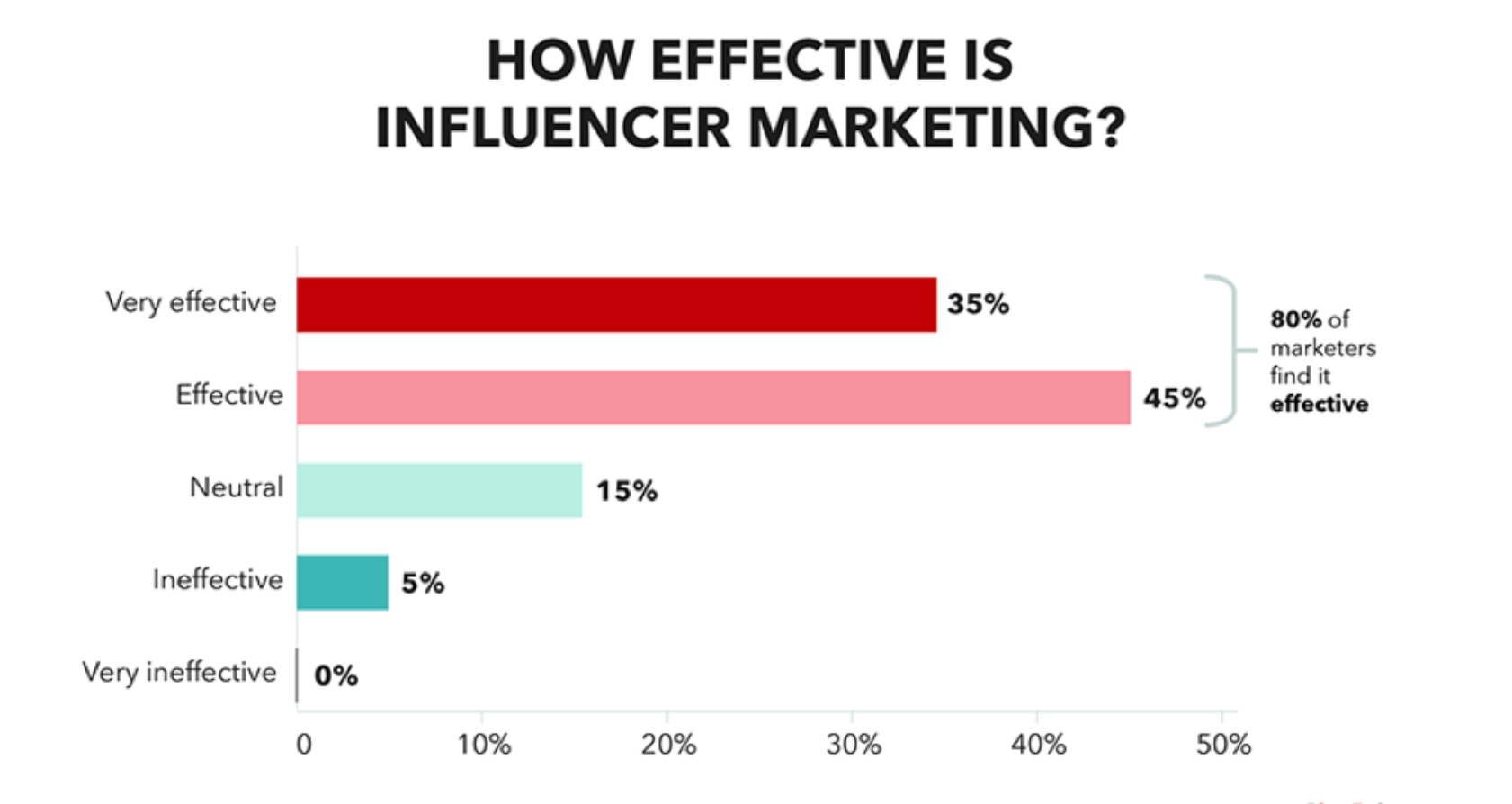 Source: Smart Insights
Source: Smart Insights
Most marketers will tell you that the model works, and the data backs them up. Today, 17% of businesses will devote more than half of their annual marketing budget to influencer marketing campaigns. And this number is only going to grow with time.
But celebrity and influencer marketing aside, if your brand doesn’t show up on Google when searching for a product or service it provides, it won’t get the air time you want it to.
For that to happen organically, a couple of steps must be taken. Understanding brand identity is first on the list.
What Is Brand Identity?
The term “brand” was originally used to refer to the mark cattle farmers used to brandish their cattle. Today, it is much more than a word used to describe symbolism or a name. A brand identity consists of what your brand says, your values, your communication through the product, and how and what you want people to feel when they interact with your company. The term can be better described as brand personality, where the unique characteristics of your business are showcased at every step.
A brand is a feature — or set of features — that distinguishes one organization from another. It consists of:
- Name
- Tagline
- Logo design
- Web Design
- Brand voice
Ultimately, the product you sell to customers creates a lasting impression. Brand identity shapes that impression.
Why Does Brand Identity Matter?
Since it embodies everything your business is and stands for, it can inspire brand loyalty in the long run and help inspire customers simultaneously. Creating a business without a good brand strategy is the biggest entrepreneurial mistake you could make. Your brand is more than the company name and its premium website domain name, and it can be challenging to install other unique elements to cultivate your brand’s persona.
These four components make it easy to identify where your brand values should be placed and how you can develop them further.
1. The Face Of The Business
Your company’s logo is its face. But while a pretty face can open many doors, keeping them open requires more than simply looking cool or interesting. Take Coca-Cola or Apple for instance – their logos are definitive as customers instantly associate any resemblance to them. Your logo’s contribution to brand identity should be associative, too.
2. Credibility
A brand identity doesn’t just make the products more memorable but also makes your brand more authoritative compared to the competition. Develop brand recognition that sticks for many generations. Establish your company’s face with a .bond domain name, and maintain it over time to develop credibility among competitors and trust among your potential customers.
3. Mission Statement
When you build an identity for your brand, you’re giving it a cause or voice to stand for. This, in turn, gives your company a purpose. Most successful companies have mission statements, and you should too. But you cannot have one without developing a brand identity first. And one of the best ways to establish that identity is by building a website with a .sbs domain name
4. Generating New Customers And Keeping Existing Ones
As strange as it may sound, people find a sense of community around most brands. These become cultural shifts and icons if left to their own devices, much like Nike Jordans have for the basketball community. A great brand identity can attract people and give them a sense of belonging, which helps your company grow as they soon become advocates too.
Building A Strong Brand Identity In Your Niche
Building a great brand identity and ensuring your business becomes a well-known and beloved brand name isn’t done overnight, nor is it an easy undertaking. It takes work and skill to navigate this space, especially if your niche is small and yet to be developed. With these simple steps, you’re on your way to build a strong brand identity.
1. Conduct Audience Research, Value Proposition, And Competition
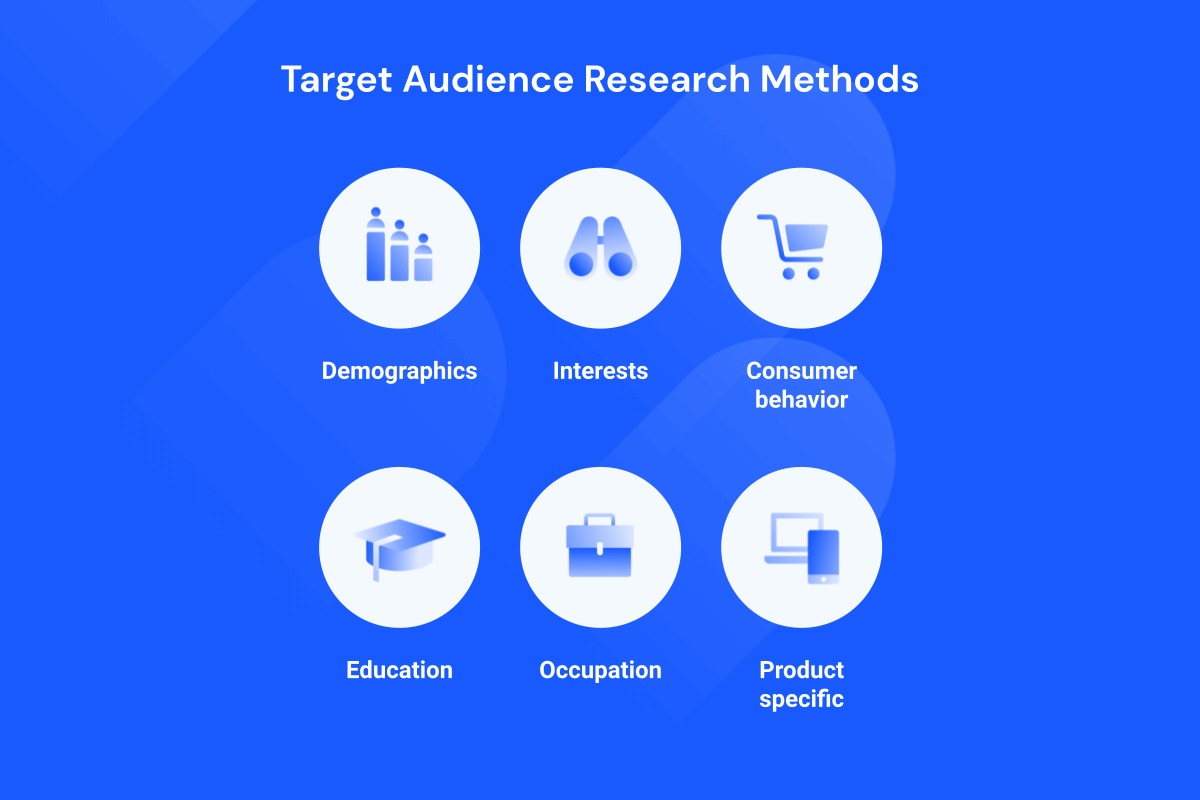 Source: Similar Web Blog
Source: Similar Web Blog
Starting a business requires tons of market research and data collection from data providers. And the same aspect applies to brand identity too. Companies need to know their target audience well enough to predict reactions ahead of time and have messaging that resonates with them. Begin by researching your audience’s pain points and analyze how your company will solve these issues for them.
Having a flashy logo and a catchy advertisement jingle or tagline is important, but if neither of these three eliminates customer pain points, you’ll struggle to build a great brand identity. Understand these five points before you get going.
1.1 Audience
People want different things, and this disparity exists in marketing for specific genders, ethnicities, and age groups. For example, pitching ideal fire pit tables to preteens is a lost cause, as is a resume matchmaking service to a construction contractor. Different people demand different things, and learning what your audience wants from a business in your industry is essential to creating a brand.
1.2 Value Proposition & Competition
Know what sets your business apart from the competition and all the aspects that make it unique. Keep an eye on your competition to figure out the nuanced differences, and will educate you on what branding techniques work well and those that don’t.
1.3 Mission
Know the purpose your business aims to serve, and have a clear and direct mission statement that represents your vision and goals. You can’t create a brand personality if you don’t know what the brand stands for. And don’t be scared to take stands on social grounds either, as customers are drawn to companies that align with their values.
1.4 Personality
Are you serious, professional, trendy like Adidas, or suave and bold like Louis Vuitton? Your brand may not represent your characteristics, but it still needs appealing qualities. It can be done with a brand image and selecting the type and colors to who the brand is and enhance the tone you’re going for.
1.5 SWOT Analysis
A SWOT Analysis can help you better understand your brand and the characteristics you wish to portray in it.
SWOT stands for:
Strengths: Positive characteristics of the brand that give an advantage over your competition.
Weaknesses: Characteristics that can be a disadvantage to your brand.
Opportunities: Trends in the industry that can provide opportunities for your brand.
Threats: Elements in the industry that may cause problems for your brand.
2. Design The Logo And Template
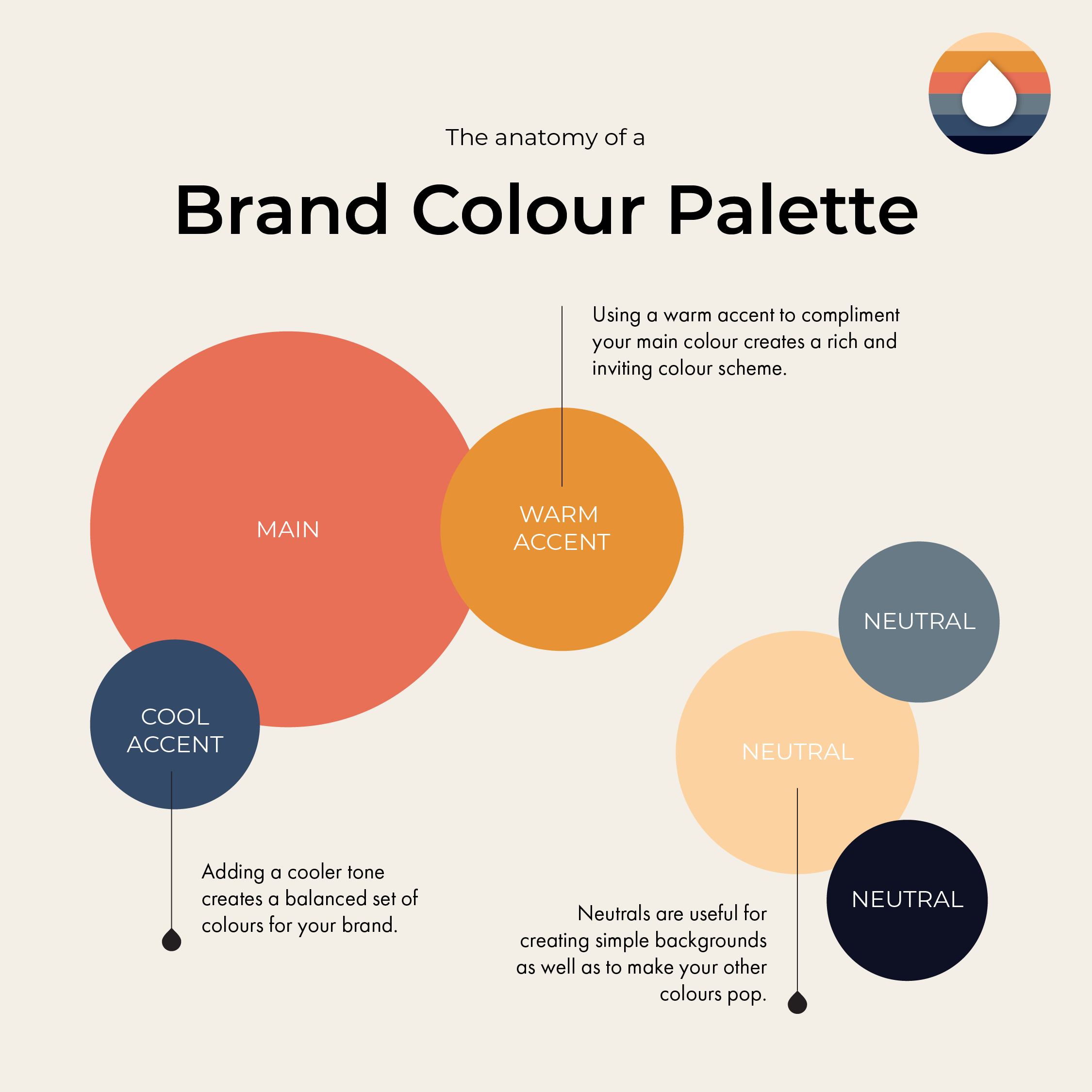 Source: Melt Marketing
Source: Melt Marketing
Once you’ve familiarized yourself with the brand, it is time to give it a face (or a fresh coat of paint). Design is the silent advocate of your brand. These are all the things you will need for a powerful ambassador:
2.1 Logo
Your logo is the most recognizable part of your brand. Logos go on everything from letterheads to company sign boards and advertisement banners.
Although the logo is not the entirety of the brand identity, it’s a vital element in the branding process — it’s the most identifiable part of your brand. It’s on everything from your website to your business cards to your online ads.
You must give your logo careful consideration when designing it if you want it to stand out. Many online logo makers can guide you in creating the ideal logo or offer creative assistance.
2.2 Color and Type
A color palette is essential in enhancing your brand’s identity. This palette can be used as a style guide and switch up the graphic design if required while staying true to the brand identity.
Typography is also a crucial element to consider. But don’t fall into the trap of mixing multiple typefaces, as your brand identity design should look cohesive and together. Your brand colors and typeface should be consistent across the board.
2.3 Templates
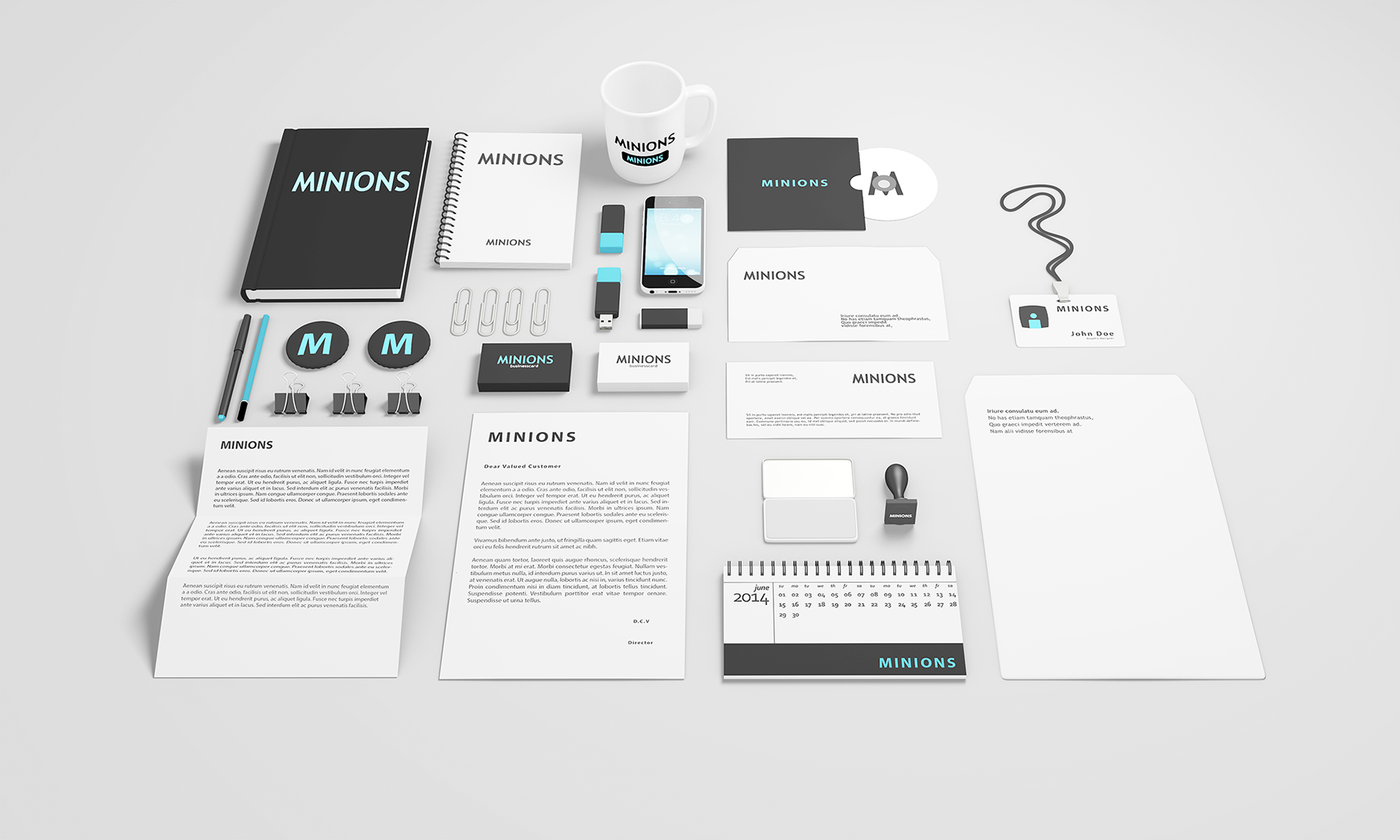 Source: Behance
Source: Behance
Your business will be required to send emails and letters and give out business cards to customers, clients, and partners almost daily. Creating templates that match across the board and have consistent stylistic brand elements will give your business a more unified, credible, and professional look and feel. Experiment with website domain extensions to give your brand a unique webpage.
2.4 The Rules of Visual Brand Design
Consistency: One can’t emphasize this point. Consistency is key. It can make or break a brand identity. Use premium presets and layouts to create consistency for your brand.
Flexibility: Flexibility provides room for adjustments in ad campaigns, taglines, and even updating your brand identity so you can continuously keep your audience interested.
Document: Create guidelines so you know what rules to follow and what your playing area is. Document the color swatches, typefaces, and other elements in the brand guidelines.
3. Build a Social Media Presence
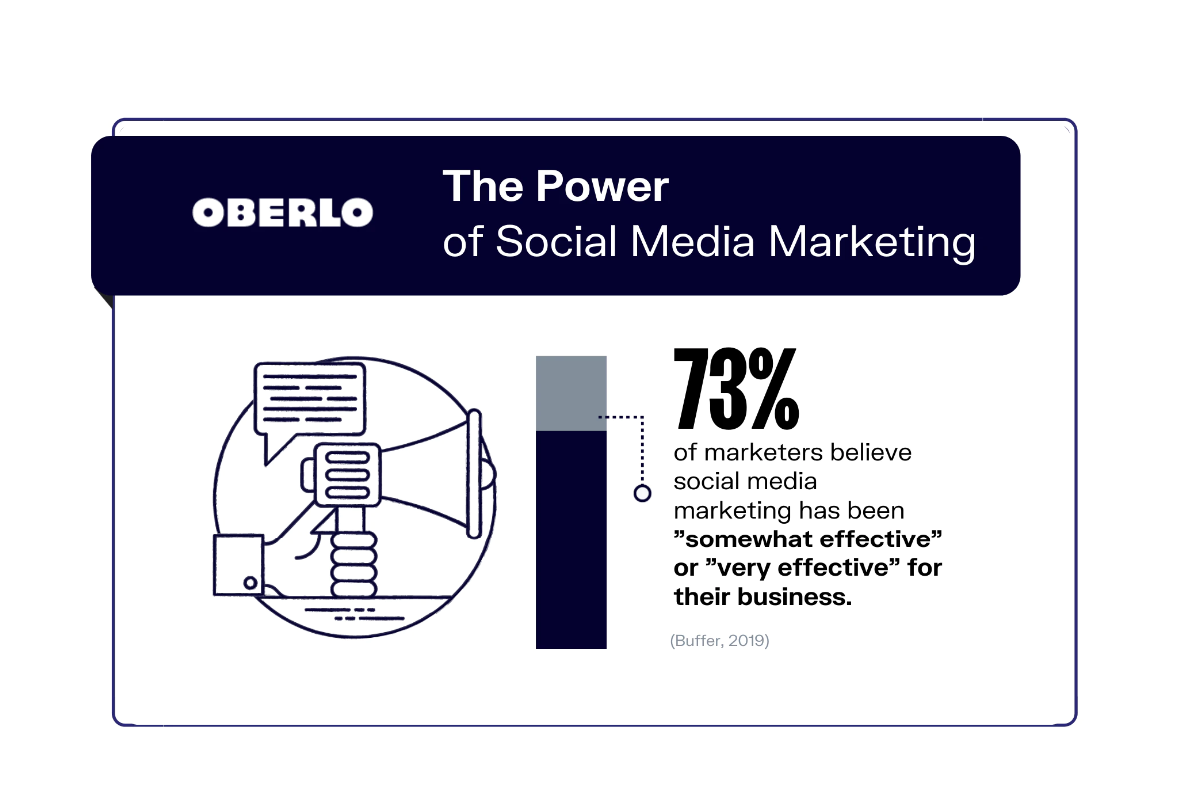 Source: Oberlo
Source: Oberlo
Now that your brand is well-researched and has a physical persona, it is time to launch it to the world and build your niche’s community. Don’t be a dress mannequin and showcase everything from an arm’s length either, adapt and evolve.
One of the best ways to do that is to provide great content to people. Content is king; in this case, your content is your brand online. Boring content shows you’re a boring brand, whereas a great story, or content, acts as your salesperson, store, and marketing department.
3.1 Language
Don’t use language that doesn’t suit the identity of your brand. If your brand positioning is high-end, use formal and professional language; if your brand is laid-back, be more conversational. This language will be incorporated into most elements of your business, so taking the time to craft a unique tone and voice is essential for your brand’s personality.
3.2 Emotion
Everyone loves a good story, and people love ones that allow them to form an emotional connection. By creating a strong brand identity, you can establish a solid emotional connection with your consumers, which, in turn, can be a solid foundation for building a lasting relationship. This idea feeds into the concept of keeping existing customers around that we discussed earlier in the article.
3.3 Social Media
Perhaps social media is the best way to establish connections with your consumers. Some of the free tools online can help put your brand’s voice out and help build a community. Brands today have multiple marketing materials and platforms to choose from.
Facebook and Twitter are standard company masthead profiles, but lately, Instagram, YouTube, and TikTok have joined the gang. But you have to be smart in dealing with your audience there. Know what information you’re providing and why.
Is your social media platform displaying takeout menus and pre-workout drinks for sale? Or does it act as a customer service hotline for your customizable wedding flower business?
Social media can be a great outlet to have genuine conversations and engagements with consumers and can help create affinity for your brand. Respond efficiently to queries and stay on top of your social media strategies. Get viral for the right reasons.
4. Know The Common Pitfalls
The entire premise of building a strong brand identity for your niche business is a bit like trying to keep an eye on stock market trends. The entire process can seem daunting, but following these steps can help. Conversely, if you’re guilty of any of these mistakes, your brand might falter or crash.
4.1 Don’t Give Your Customers Mixed Messages
Always know what you want to say, and use the appropriate language and visuals to say it. It’s not always a given that if a message makes sense to you, it will make sense to your customers.
4.2 Don’t Copy Competitors
If you and your competitors sell the same products or services, it can be tempting to copy their brand identity. But remember, their company’s identity is akin to their brand assets. Refrain from copying their homework, but feel free to study their approach to build a better and modern alternative. Differentiation is key here.
4.3 Don’t Be Inconsistent Between Online And Offline
Your print material may look slightly different from your online presence and that is to be expected. But don’t go overboard, and ensure your colors, type, theme, and message should all be consistent. Don’t rebrand across mediums.
5. Monitor Your Brand To Maintain Its Brand Identity
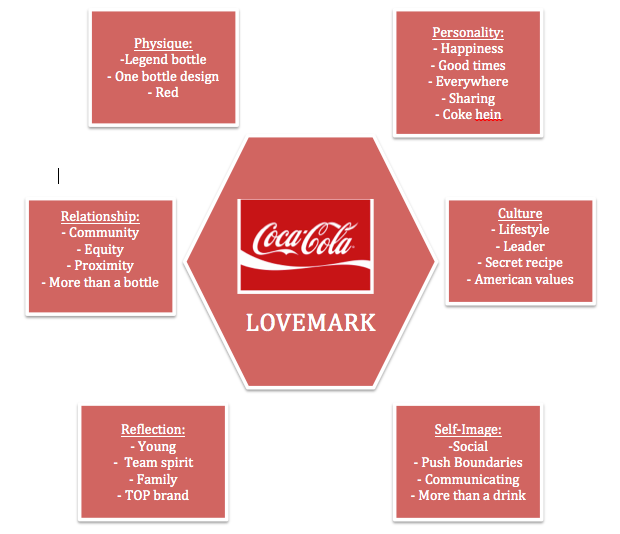
Source: Coke Vs Pepsi
In all aspects of digital marketing, as popular development houses like Digitarial would attest to, it can be difficult to know how well your brand is doing if you don’t track its performance. Using key performance metrics is also essential to chart your brand’s growth.
We recommend using the following to get a sense of how people talk about and interact with you.
- Google Analytics
- Comments
- Surveys
- Social media discussions
- Forums, etc.
This can act as real-time feedback and help you implement changes to your brand as needed. These changes can be slight modifications or a complete rebrand.
Test, learn, and optimize. Find out how your brand differs from the competition and build a solid community amongst your consumers and target audience. Create the hype, fuel it, and if the product or service deserves praise, customers will jump on the bandwagon immediately.
Looking back at the earlier examples, Apple and Coca-Cola are beyond marketing strategies. For them, their logo is enough. That is the benchmark all niche brands should aim for but have their own workarounds and methods to get there.
Conclusion
Building a strong brand identity for your niche business is tough work, but with the right guidelines at your disposal, you’re on the right path. Brand identities change and evolve over time, and it’s good to evolve with them, but evolution only takes place when a successful present iteration exists.
We hope with this guide and brand identity tips, your company can get going on its journey to becoming a prominent example of strong branding. Regardless of the niche, the principles at play cater to all and hope they did to you as well.
Author Bio

Burkhard Berger is the founder of Novum™. Follow Burkhard on his journey from $0 to $100,000 per month. He’s sharing everything he learned in his income reports on Novum™ so you can pick up on his mistakes and wins.
